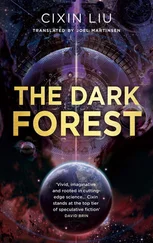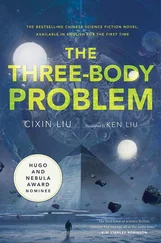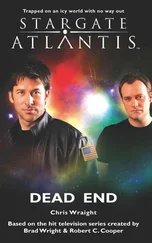Just then, Singer noticed a sincere set of coordinates near the course of the seed. The set of coordinates was broadcast by long membrane, and even Singer himself couldn’t be sure what told him that the set of coordinates was sincere—intuition could not always be explained. He decided to cleanse it. He wasn’t busy, and the task wasn’t going to distract him from singing. Even if he got it wrong, it was not a big deal. Cleansing was not a precision task and didn’t require absolute accuracy. It also wasn’t urgent. He just had to get it done eventually. This was also why his position wasn’t prestigious.
Singer took a mass dot out of the seed’s magazine, then he turned to look for the star indicated by the set of coordinates. The main core guided his gaze, like a spear sweeping through the starry sky. Singer grasped the mass dot with a force field feeler and prepared to flick it. But then he saw the location indicated by the set of coordinates and the feeler relaxed.
Of the three stars, one was missing. There was a white cloud of dust in its place, like the feces of an abyss whale.
It’s already been cleansed. Nothing more to do.
Singer put the mass dot back into storage.
That was fast.
He activated a main core process to trace the source of the mass dot that had killed that star. This was a hopeless task with almost zero chance of success, but required by established procedure. The process soon terminated, and like every other time, yielded no results.
Singer soon understood why the cleansing had happened so fast. He saw a slow fog in the vicinity of that destroyed world. The slow fog was about half a structure length away from that world. Seen by itself, it wasn’t apparent where the fog had come from, but when connected with the broadcast coordinates, it was obvious that the fog belonged to that world. The slow fog showed that the world was dangerous, which was why the cleansing had come so quickly. It appeared that there were other low-entropy entities with even sharper intuition than he; but that wasn’t strange. It was as the Elder said: In the cosmos, no matter how fast you are, someone will be faster; no matter how slow you are, someone will be slower.
Every set of broadcast coordinates would eventually be cleansed; it was just a matter of sooner versus later. One low-entropy entity might think this set of coordinates insincere, but on the millions upon millions of low-entropy worlds there were billions upon billions tasked with cleansing—someone would think it sincere. All low-entropy entities possessed the cleansing gene, and cleansing was an instinct. Also, cleansing was a very simple thing. The cosmos was full of sources of potential power—one just had to trigger them to complete the task. It required so very little, and didn’t even delay singing.
If Singer were patient, all sincere coordinates would eventually be cleansed by other, unknown low-entropy entities. But this was not a good thing for either the home world or the seed. Since Singer had received the set of coordinates and even glanced at the world pointed to by the coordinates, Singer had a connection to that world. It would be naïve to think of this connection as unidirectional. Recall the great law of reversible discovery: If you could see a low-entropy world, then that low-entropy world could also see you—it was only a matter of time. Thus, waiting for others to complete cleansing was dangerous.
The next task was to put this now-useless set of coordinates into the data bank called the tomb. This was also required by established procedure. Of course, all other information having to do with the location needed to go into the data bank as well, just as personal effects were buried with the body, as was the custom on the home world.
Among the “personal effects” was something that piqued Singer’s interest. It was a record of the dead world’s three communications with another location using medium membrane. Medium membrane was the least efficient communication membrane, also called primitive membrane. Most communications preferred long membrane, though it was said that even short membrane could be used to convey messages. If true, that would make the communicators akin to gods. But Singer liked primitive membrane. He thought primitive membrane possessed a simple beauty, symbolizing an age full of joy. He often turned primitive membrane messages into songs. He thought they sounded pretty, even if he didn’t understand them. Understanding them wasn’t necessary, however; other than coordinates, primitive membrane messages didn’t have much useful information. It was enough to enjoy the music.
But this time, Singer was able to understand some of the message, because some parts carried a self-decoding system! Although Singer was only able to understand a little, grasp an outline, it was enough for him to see an incredible history.
First, the other location had broadcast a message via primitive membrane. The low-entropy entities of that world clumsily plucked their star—Singer decided to call them the Star-Pluckers—like ancient bards of the home world plucking the strings of the rough country zither, to send out the message. It was this message that contained the self-decoding system.
Although the self-decoding system was primitive and clumsy, it was sufficient to allow Singer to see that a subsequent message sent out by the dead three-star world followed the same encoding scheme—apparently an answer to the first message sent by the Star-Pluckers! This was already nearly inconceivable, but after that, the Star-Pluckers responded again!
Interesting. Very interesting!
Singer had indeed heard of low-entropy worlds that possessed neither the hiding gene nor the hiding instinct, but this was the first time he had seen one. Of course, the three communications between these two would not reveal their absolute coordinates, but they did expose the distance between the two worlds. If the distance were fairly large, it wouldn’t be a big deal either; but the distance was very short, only 416 structures—the two worlds were practically on top of each other. This meant that if one world’s coordinates were exposed, the other would also be exposed—it was just a matter of time.
This was how the Star-Pluckers’ coordinates were revealed.
Nine time grains after the first three communications, another record appeared: The Star-Pluckers plucked their star again to send out another broadcast… a set of coordinates! The main core was certain that it was a set of coordinates. Singer looked for the star indicated by the coordinates and saw that it had also been cleansed, about thirty-five time grains ago.
Singer thought that perhaps he had been wrong. The Star-Pluckers must have possessed the hiding gene. They obviously had the cleansing gene, so it was impossible that they didn’t also possess the hiding gene. But like most coordinate broadcasters, they didn’t have the ability to cleanse on their own.
Interesting. Very interesting.
Why did whoever cleansed the dead three-star world not also cleanse the world of the Star-Pluckers? Many possibilities. Perhaps they hadn’t noticed these three communications—primitive membrane messages often didn’t get much attention. But given the millions upon millions of worlds out there, someone would have noticed—Singer was just one who did. Even without Singer, some other low-entropy entity would have noticed them; it was just a matter of time. Or perhaps they had noticed them, but decided that a low-entropy group that didn’t possess the hiding gene wasn’t much of a threat, and cleansing them was more trouble than it was worth.
But that would be a mistake, a terrible mistake! Broadly speaking, if low-entropy entities like these Star-Pluckers really didn’t have the hiding gene, then they would not be afraid of exposing their own presence, and they would expand and attack without fear.
Читать дальше












